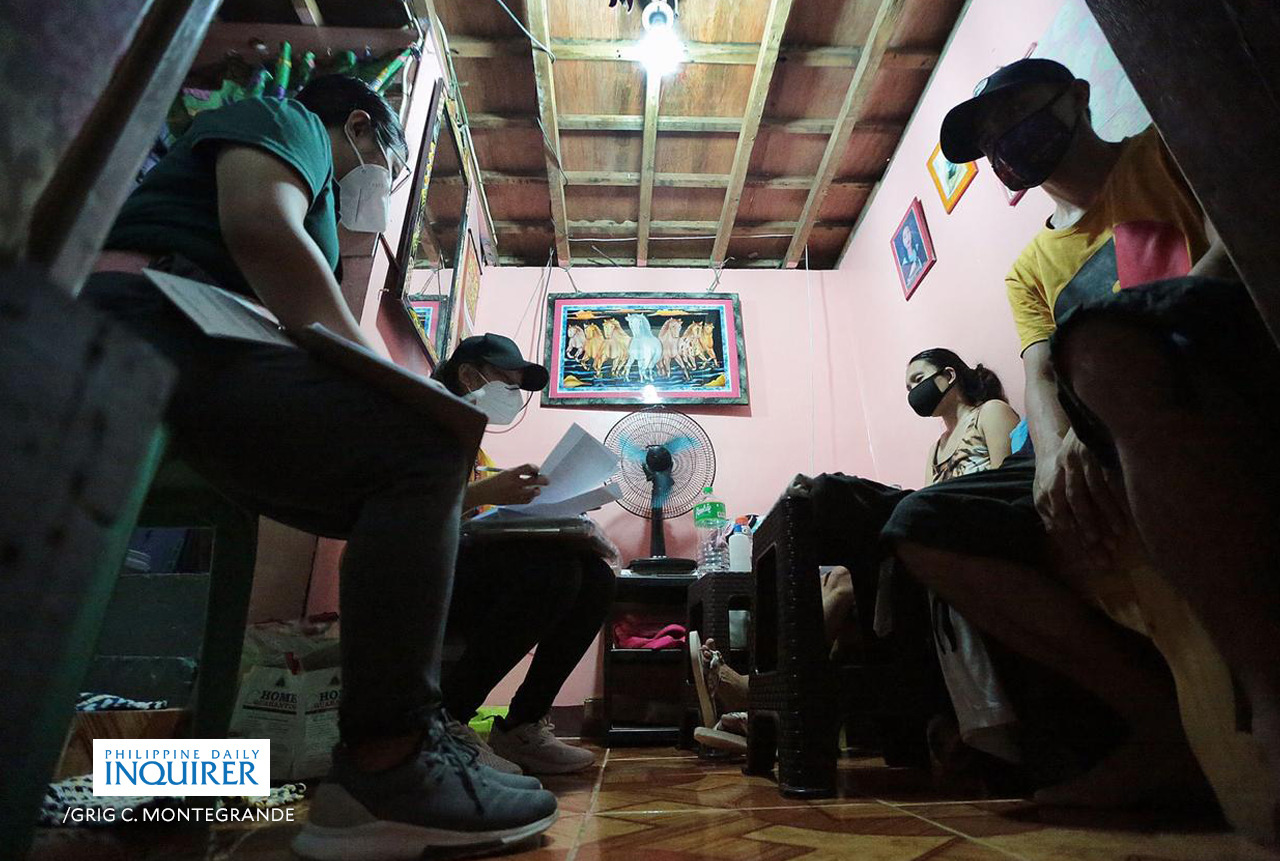
FILE – A contact tracing team of the City Epidemiology and Surveillance Unit (CESU) of the Quezon City government conducts house to house tracing of possible COVID-19 patients in Brgy. Baesa on Wednesday, July 15. INQUIRER/GRIG C. MONTEGRANDE
MANILA, Philippines — The Department of the Interior and Local Government (DILG) on Saturday said that it has now hired more than 35,000 contact tracers nationwide and that it was close to hitting its target of 50,000.
“Malapit na po natin makuha yung ating target na 50,000 contact tracers na alinsunod sa ating Bayanihan 2 Act,” DILG Undersecretary and spokesman Jonathan Malaya said during Laging Handa online press briefing.
(We are close to getting our target of 50,000 contact tracers as mandated in the Bayanihan 2 Act.)
Under the Bayanihan to Recover as One Act, or Bayanihan 2, some P5 billion was allocated for contract tracers nationwide.
According to Malaya, the DILG has now hired 35,345 contact tracers, of which 27,879 were already trained and deployed to different local government units nationwide.
Malaya added that the agency has received 65,000 applications for the 50,000 slots open for contact tracers.
“We have processed some 57,743 applications,” he said.
With this, the DILG spokesman said he expects that the hiring of additional contact tracers will be done by next week.
“I would expect in the next week na matatapos na po ng DILG yung pagha-hire ng additional contact tracers at maide-deploy na po namin sila sa lahat ng LGUs sa buong bansa,” he said.
(I would expect that in the next week, the DILG is done with the hiring of additional contact tracers, and we will deploy them in all LGUs across the country.)
The contact tracers will earn a minimum of P18,784 per month in a contract of service status, the DILG previously said.
Currently, the country’s COVID-19 tally stands at 351,570, with 294,865 recoveries and 6,531 deaths.